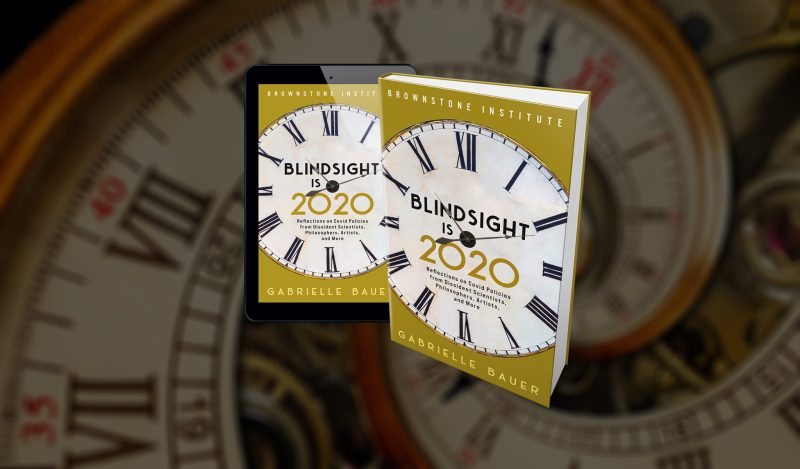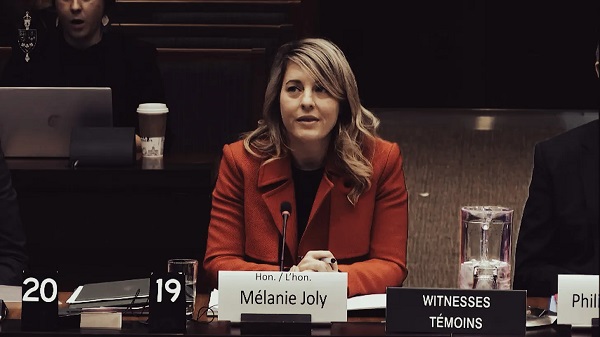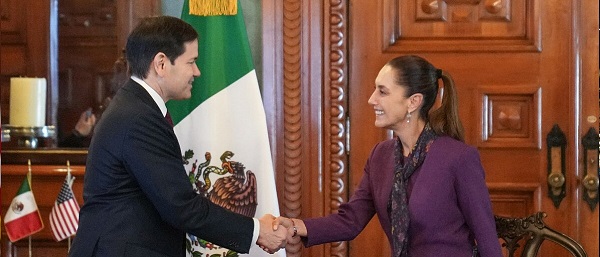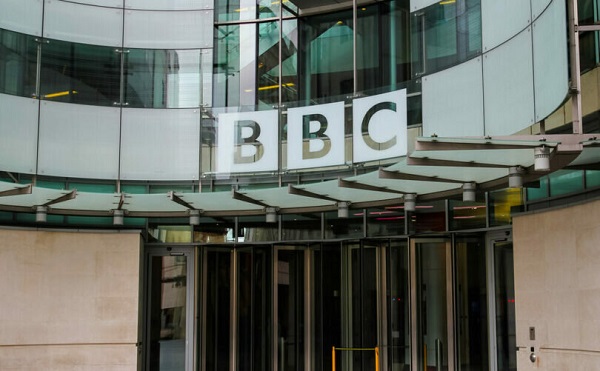Brownstone Institute
Focused Protection: Jay Bhattacharya, Sunetra Gupta, and Martin Kulldorff

From the Brownstone Institute
BY
If you express any misgivings about the Covid policies, people are quick to retort: OK, so what’s your solution? How do you propose we should have handled the pandemic instead? Three experts came up with an answer, which they put into writing and co-signed in the Massachusetts town of Great Barrington on October 4, 2020.
[This is an excerpt from the author’s new book Blindsight Is 2020, published by Brownstone.]
Nobody could fault their credentials. A public health expert focusing on infectious diseases and vulnerable populations, Stanford University professor Jay Bhattacharya doubles as a health economist. Sunetra Gupta, an epidemiology professor at Oxford University, specializes in immunology, vaccine development, and mathematical modeling of infectious diseases. Martin Kulldorff, a biostatistician and epidemiologist, ended an 18-year run as a Harvard University professor in 2021.
The strategy they proposed in the Great Barrington Declaration (GBD) flowed from a unique feature of the coronavirus: its unusually sharp and well-defined risk gradient. By the end of summer 2020, studies were confirming what the staff in every hospital already knew: “The risk [of dying of Covid] climbs steeply as the years accrue.” The CDC published an infographic that put this sharp gradient into relief: if you contracted the virus at age 75-84, your risk of dying from it was 3,520 times higher than if you caught it at age 5-17. Chronic conditions such as obesity, heart disease, and diabetes also bumped up the risk, though not nearly as much as age.
So here we had a virus that posed a significant risk to some people and a very small risk to others. At the same time we had lockdown policies that, for all their egalitarian pretensions, divided people rather neatly along class lines. To the professional couple with a chef’s kitchen and a subscription to four streaming services, lockdowns represented a chance to reconnect and revel in life’s simple pleasures, like home-baked olive bread and Humphrey Bogart movies. To the newly landed foreign student, dizzy with loneliness under his basement ceiling, not so much. Essential workers, for their part, were expected to bear the risks deflected by the laptop class.
This confluence of circumstances made it impossible not to consider the question: Might we give low-risk groups back their freedom while protecting more vulnerable people? That’s exactly what the GBD proposed. I’ve reproduced it here in abbreviated form:
Current lockdown policies are producing devastating effects on short and long-term public health. Keeping these measures in place until a vaccine is available will cause irreparable damage, with the underprivileged disproportionately harmed.
We know that vulnerability to death from COVID-19 is more than a thousand-fold higher in the old and infirm than the young. We know that all populations will eventually reach herd immunity and that this can be assisted by (but is not dependent upon) a vaccine. Our goal should therefore be to minimize mortality and social harm until we reach herd immunity.
The most compassionate approach is to allow those who are at minimal risk of death to live their lives normally to build up immunity to the virus through natural infection, while better protecting those who are at highest risk. We call this Focused Protection. A comprehensive and detailed list of measures, including approaches to multi-generational households, can be implemented, and is well within the scope and capability of public health professionals.
Those who are not vulnerable should immediately be allowed to resume life as normal. Arts, music, sport and other cultural activities should resume. People who are more at risk may participate if they wish, while society as a whole enjoys the protection conferred upon the vulnerable by those who have built up herd immunity.
Outside the context of Covid, there was nothing radical about the proposal. It aligned with pre-Covid pandemic guidance from such organizations as the WHO and CDC, which advised against blanket restrictions and put a premium on minimizing social disruption. It also capped off a growing unrest throughout the summer of 2020, when groups of experts in several countries began calling for a less aggressive approach to Covid—from Balanced Response in Canada to New Zealand’s Covid Plan B—and exhorting their governments to restore a more normal life for the lower-risk majority. The GBD emerged as the culmination of these rumblings, the anti-lockdown appeal that finally got the world’s attention. Quiet academics on the eve of its launch, Bhattacharya, Gupta and Kulldorff now had the global spotlight on their faces.
When the trio posted the document online, they invited supporters to co-sign it. The signature count grew very quickly for a few days—I know, because I watched the changing digits—and then screeched to a halt. The backlash began just four days after the GBD came out, when Francis Collins, then-director of the National Institutes of Health, called it the work of “three fringe epidemiologists” in an email to Fauci and other high-ranking colleagues. Evidently concerned about the media buzz surrounding the Declaration, he requested a “quick and devastating take down [sic] of its premises.”
Collins got his wish when an article by Yale University epidemiologist Gregg Gonsalves appeared in The Nation that same day. We’re not going to follow “some notion of the survival of the young and the fittest,” Gonsalves wrote—a rather elastic interpretation of “protect the vulnerable.” A few days later, the Lancet published a GBD rebuttal statement known as the John Snow Memorandum. Fauci himself described the GBD as “nonsense” and “dangerous.”
With Fauci’s blessing to bash the GBD, media pundits and online warriors happily obliged. Outrage flared up in print and on social media: Murderers! Covid deniers! They don’t care about the vulnerable! (Never mind that the whole strategy revolved around shielding the vulnerable.) “I started getting calls from reporters asking me why I wanted to ‘let the virus rip,’ when I had proposed nothing of the sort. I was the target of racist attacks and death threats,” Bhattacharya recalls. Rumors that the American Institute for Economic Research (AIER) was using the GBD trio to advance a libertarian agenda began to circulate. In fact, “AIER was kind enough to provide the venue for the meeting that led to the Great Barrington Declaration, but played no role in designing its content.”
Jeffrey Tucker, AIER’s senior editor at the time (and founder of the Brownstone Institute), explained to me that the group was “hoping to catalyze a discussion around the Covid policies. We had no idea where it would go or how big it would become.”
The term “herd immunity” acquired dark undertones, with everyone forgetting that respiratory pandemics have ended with herd immunity throughout history. The misreading of the term as a callous and individualistic concept continues to puzzle Gupta, who notes that “herd immunity is actually a deeply communitarian idea” because broad societal immunity “is what ends up protecting the vulnerable.”
Suddenly personae non gratae, the GBD partners sought vainly to defend themselves to an audience that had already blocked its ears. Gupta, a life-long progressive, was relegated to publishing her thoughts in conservative news outlets. “I would not, it is fair to say, normally align myself with the Daily Mail,” she admitted in an article she wrote for the newspaper shortly after the GBD came out, adding that she was “utterly unprepared for the onslaught of insults, personal criticism, intimidation and threats that met our proposal.”
I had the opportunity to chat with all three members of the GBD team on separate group video calls. For the record, I cannot imagine a more sincere and gracious trio—the types of people my late mother would have called mensches. Had their critics spent an hour with them over nachos and craft beer, I’m confident the smear campaign against them would have fizzled right out.
Sometimes, a single word can make everything fall into place. The word “unpoetic,” which Gupta used to describe the Covid response, had this effect on me. It was the word I had been searching for all along, the key to what the stay-home-save-lives people were missing. It’s probably no coincidence that Gupta wears a second hat as an award-winning novelist, giving her mind a respite from the biomedical world view.
“It’s a crisis of pathos,” she said when I asked her to elaborate. “It’s a one-dimensional response to a multidimensional crisis. I call it an unpoetic response because it misses the soul of life, the things that give life meaning.”
If Gupta found the pandemic response lacking in poetry, she also decried its esthetics. Sitting at a restaurant table, breaking bread with your unmasked friends while the masked server grinds fresh pepper over your linguini…the “unbearable feudal aspect of it” offended her egalitarian sensibilities. “It echoes the caste system, [with] all sorts of rules about who can receive a drink of water from whom—all these completely illogical and highly unesthetic rules that are there to demolish the dignity of individuals.”
That same word, feudal, underpins Tucker’s analysis of the Covid restaurant closures. In one of his numerous essays, he notes that “the tavern, the coffee house, and the restaurant had a huge role in spreading the idea of universal rights.” The restaurant closures represented “a return to a pre-modern age in which only the elites enjoyed access to the finer things”—what Tucker calls a “new feudalism.”
As the pandemic progressed, Gupta continued to delight me with her insights—like the notion of shared responsibility for viral transmission. “It is fruitless to trace the source of infection to a single event,” she reflects in The Telegraph. “In our normal lives, many die of infectious disease but we collectively absorb the guilt of infecting them. We could not function as a society otherwise.”
Such a lovely way of putting it: we collectively absorb the guilt. Nobody has to worry about “killing grandma” because nobody is killing grandma. A pathogen enters our world and we divide its psychic weight among us, the burden made lighter for being shared. (It goes without saying that deliberately infecting someone falls into a different category, though I have yet to hear of anyone who seeks to do that.) But Covid culture “concentrated the blame that should have been dispersed within the community upon an individual,” Gupta says. And for individuals like Gupta, who spoke out publicly against a strategy sold to (and bought by) the public as necessary, the blaming and shaming culture knew no pity.
I had some idea of what Gupta and her GBD collaborators were going through, having received my share of invective when discussing Covid policies online: Go lick a pole and catch the virus. Have fun choking on your own fluids in the ICU. Name three loved ones you’re ready to sacrifice to Covid—do it now, coward. Enjoy your sociopathy.
None of these missives came from anyone who knew me personally, but after receiving enough of them I started to wonder if the shamers knew something I didn’t.
“What if the lockdown lovers are right?” I asked Dr. Zoom on one occasion. “What if I am a sociopath?”
“You’re not a sociopath.”
“How do you know?”
“A sociopath wouldn’t ask the question—plus sociopaths don’t introspect and you do nothing but introspect. You’re the queen of introspection.”
“Why do you think I do that? Is it a defense mechanism or something?
“See? You’re doing it again.”
I wrote an article about my experience with Covid shamers, which prompted people from all over the world to email their own stories to me. Many of them had it a lot worse than I did, their heterodox views having cost them jobs and friendships (and in one case, a marriage). Kulldorff tweeted a link to the article with an accompanying assertion that “shaming never is, never was, and never will be part of good public health practice.”
Also: it doesn’t work. Calling someone a troglodyte for opposing a mask mandate does not bring about a change of heart. It just invites resistance—or drives people underground, as Harvard epidemiologist Julia Marcus points out: “Shaming and blaming people is not the best way to get them to change their behavior and actually can be counterproductive because it makes people want to hide their behavior.”
Amid all the shouting and shaming, some public health experts asked reasonable questions about how the GBD architects proposed to shield the vulnerable from a virus allowed to spread freely in society. Bhattacharya, Gupta and Kulldorff had answers to that, but the time for a fair hearing had come and gone. The window of opportunity to explore a focused protection strategy, pried open for a week or two by the Declaration, slammed shut again. It wasn’t long before Facebook censored mentions of the document.
This was not a healthy state of affairs. As Harry Truman remarked in 1950, “once agovernment is committed to the principle of silencing the voice of opposition, it has only one way to go, and that is down the path of increasingly repressive measures.” Likewise, the dismissal of the GBD as a “dangerous idea” would not have impressed Supreme Court Justice Louis Brandeis, who wrote that “the essential character of a political community is both revealed and defined by how it responds to the challenge of threatening ideas” and that “fear of serious injury alone cannot justify oppression of free speech.” Is it just me, or were decision makers smarter back then?
With neither a Truman nor a Brandeis to defend them, the GBD creators no longer stood a chance in the public arena. Bhattacharya and Gupta turned their attention to Collateral Global, a UK charity devoted to documenting the harms of the lockdown policies, and Kulldorff joined the Brownstone Institute as a senior scholar. Which doesn’t mean they forgot about what happened. In August 2022, Bhattacharya and Kulldorff, along with two other doctors, joined the State of Missouri’s lawsuit against the federal government for quashing debate about Covid policies. In the court document, which begins with George Washington’s warnings against censorship, the plaintiffs accuse the US government of “open collusion with social-media companies to suppress disfavored speakers, viewpoints, and content.” With any luck, the case will rattle some closet doors.
In the early months of the pandemic, scientists concerned about lockdowns feared “coming out” in public. The GBD partners took one for the B team and did the dirty work. They paid a heavy price for it, including the loss of some personal friendships, but they held their ground. In print, on air, and on social media, Bhattacharya continues to describe lockdowns as “the single worst public health mistake in the last 100 years,” with catastrophic health and psychological harms that will play out for a generation.
It’s no longer unfashionable to agree with them. A National Post article written by four prominent Canadian doctors in late 2022 maintains that the “draconian Covid measures were a mistake.” A retrospective analysis in The Guardian suggests that, instead of going full bore on the lockdown strategy, we “should have put far more effort into protecting the vulnerable.” Even the sober Nature admits that lockdowns “exacerbate inequalities that already exist in society. Those already living in poverty and insecurity are hit hardest”—exactly the key takeaway from the Australian Fault Lines report released in October 2022.
Kulldorff captures this sea change in one of his tweets: “In 2020 I was a lonely voice in the Twitter wilderness, opposing lockdowns with a few scattered friends. [Now] I am preaching to the choir; a choir with a wonderful, beautiful voice.” The landscape has also become more hospitable for Bhattacharya, who in September 2022 received Loyola Marymount University’s Doshi Bridgebuilder Award, awarded annually to individuals or organizations dedicated to fostering understanding between cultures and disciplines.
Perhaps the concept of focused protection simply arrived too early for a frightened public to metabolize it. But the idea never died down completely, and after the paroxysms of moral indignation ran their course, it slowly grew a second skin. By September 2022, the tally of GBD co-signatories had surpassed 932,000, with over 60,000 of them from doctors and medical/public health experts. Not bad for a dangerous document by a trio of fringe epidemiologists. And would it be churlish to point out that the John Snow Memorandum maxed out at around 7,000 expert signatures?1
The GBD didn’t get every detail right, of course. Nobody could have anticipated, back in the fall of 2020, all the surprises the virus had in store for us. While reasonable at the time, the Declaration’s confidence in herd immunity proved overambitious. We now know that neither infection nor vaccination provides durable immunity against Covid, leaving people vulnerable to second (and fifth) infections. And for all their effect on disease severity, the vaccines don’t stop transmission, pushing herd immunity still further from reach.
Be that as it may, the GBD creators wrote a crucial chapter in the pandemic story. They planted seeds of doubt in a locked-in narrative. After all the insults were thrown, the seeds took root in our collective consciousness and may well have shaped policy indirectly. And as research continues to document the dubious benefits and profound harms of the maximum-suppression strategy, yesterday’s shamers and mockers are inching back toward the question: Could we have done it another way? Might focused protection have worked just as well, or better, and with considerably less damage?
Brownstone Institute
Bizarre Decisions about Nicotine Pouches Lead to the Wrong Products on Shelves

From the Brownstone Institute
A walk through a dozen convenience stores in Montgomery County, Pennsylvania, says a lot about how US nicotine policy actually works. Only about one in eight nicotine-pouch products for sale is legal. The rest are unauthorized—but they’re not all the same. Some are brightly branded, with uncertain ingredients, not approved by any Western regulator, and clearly aimed at impulse buyers. Others—like Sweden’s NOAT—are the opposite: muted, well-made, adult-oriented, and already approved for sale in Europe.
Yet in the United States, NOAT has been told to stop selling. In September 2025, the Food and Drug Administration (FDA) issued the company a warning letter for offering nicotine pouches without marketing authorization. That might make sense if the products were dangerous, but they appear to be among the safest on the market: mild flavors, low nicotine levels, and recyclable paper packaging. In Europe, regulators consider them acceptable. In America, they’re banned. The decision looks, at best, strange—and possibly arbitrary.
What the Market Shows
My October 2025 audit was straightforward. I visited twelve stores and recorded every distinct pouch product visible for sale at the counter. If the item matched one of the twenty ZYN products that the FDA authorized in January, it was counted as legal. Everything else was counted as illegal.
Two of the stores told me they had recently received FDA letters and had already removed most illegal stock. The other ten stores were still dominated by unauthorized products—more than 93 percent of what was on display. Across all twelve locations, about 12 percent of products were legal ZYN, and about 88 percent were not.
The illegal share wasn’t uniform. Many of the unauthorized products were clearly high-nicotine imports with flashy names like Loop, Velo, and Zimo. These products may be fine, but some are probably high in contaminants, and a few often with very high nicotine levels. Others were subdued, plainly meant for adult users. NOAT was a good example of that second group: simple packaging, oat-based filler, restrained flavoring, and branding that makes no effort to look “cool.” It’s the kind of product any regulator serious about harm reduction would welcome.
Enforcement Works
To the FDA’s credit, enforcement does make a difference. The two stores that received official letters quickly pulled their illegal stock. That mirrors the agency’s broader efforts this year: new import alerts to detain unauthorized tobacco products at the border (see also Import Alert 98-06), and hundreds of warning letters to retailers, importers, and distributors.
But effective enforcement can’t solve a supply problem. The list of legal nicotine-pouch products is still extremely short—only a narrow range of ZYN items. Adults who want more variety, or stores that want to meet that demand, inevitably turn to gray-market suppliers. The more limited the legal catalog, the more the illegal market thrives.
Why the NOAT Decision Appears Bizarre
The FDA’s own actions make the situation hard to explain. In January 2025, it authorized twenty ZYN products after finding that they contained far fewer harmful chemicals than cigarettes and could help adult smokers switch. That was progress. But nine months later, the FDA has approved nothing else—while sending a warning letter to NOAT, arguably the least youth-oriented pouch line in the world.
The outcome is bad for legal sellers and public health. ZYN is legal; a handful of clearly risky, high-nicotine imports continue to circulate; and a mild, adult-market brand that meets European safety and labeling rules is banned. Officially, NOAT’s problem is procedural—it lacks a marketing order. But in practical terms, the FDA is punishing the very design choices it claims to value: simplicity, low appeal to minors, and clean ingredients.
This approach also ignores the differences in actual risk. Studies consistently show that nicotine pouches have far fewer toxins than cigarettes and far less variability than many vapes. The biggest pouch concerns are uneven nicotine levels and occasional traces of tobacco-specific nitrosamines, depending on manufacturing quality. The serious contamination issues—heavy metals and inconsistent dosage—belong mostly to disposable vapes, particularly the flood of unregulated imports from China. Treating all “unauthorized” products as equally bad blurs those distinctions and undermines proportional enforcement.
A Better Balance: Enforce Upstream, Widen the Legal Path
My small Montgomery County survey suggests a simple formula for improvement.
First, keep enforcement targeted and focused on suppliers, not just clerks. Warning letters clearly change behavior at the store level, but the biggest impact will come from auditing distributors and importers, and stopping bad shipments before they reach retail shelves.
Second, make compliance easy. A single-page list of authorized nicotine-pouch products—currently the twenty approved ZYN items—should be posted in every store and attached to distributor invoices. Point-of-sale systems can block barcodes for anything not on the list, and retailers could affirm, once a year, that they stock only approved items.
Third, widen the legal lane. The FDA launched a pilot program in September 2025 to speed review of new pouch applications. That program should spell out exactly what evidence is needed—chemical data, toxicology, nicotine release rates, and behavioral studies—and make timely decisions. If products like NOAT meet those standards, they should be authorized quickly. Legal competition among adult-oriented brands will crowd out the sketchy imports far faster than enforcement alone.
The Bottom Line
Enforcement matters, and the data show it works—where it happens. But the legal market is too narrow to protect consumers or encourage innovation. The current regime leaves a few ZYN products as lonely legal islands in a sea of gray-market pouches that range from sensible to reckless.
The FDA’s treatment of NOAT stands out as a case study in inconsistency: a quiet, adult-focused brand approved in Europe yet effectively banned in the US, while flashier and riskier options continue to slip through. That’s not a public-health victory; it’s a missed opportunity.
If the goal is to help adult smokers move to lower-risk products while keeping youth use low, the path forward is clear: enforce smartly, make compliance easy, and give good products a fair shot. Right now, we’re doing the first part well—but failing at the second and third. It’s time to fix that.
Addictions
The War on Commonsense Nicotine Regulation

From the Brownstone Institute
Cigarettes kill nearly half a million Americans each year. Everyone knows it, including the Food and Drug Administration. Yet while the most lethal nicotine product remains on sale in every gas station, the FDA continues to block or delay far safer alternatives.
Nicotine pouches—small, smokeless packets tucked under the lip—deliver nicotine without burning tobacco. They eliminate the tar, carbon monoxide, and carcinogens that make cigarettes so deadly. The logic of harm reduction couldn’t be clearer: if smokers can get nicotine without smoke, millions of lives could be saved.
Sweden has already proven the point. Through widespread use of snus and nicotine pouches, the country has cut daily smoking to about 5 percent, the lowest rate in Europe. Lung-cancer deaths are less than half the continental average. This “Swedish Experience” shows that when adults are given safer options, they switch voluntarily—no prohibition required.
In the United States, however, the FDA’s tobacco division has turned this logic on its head. Since Congress gave it sweeping authority in 2009, the agency has demanded that every new product undergo a Premarket Tobacco Product Application, or PMTA, proving it is “appropriate for the protection of public health.” That sounds reasonable until you see how the process works.
Manufacturers must spend millions on speculative modeling about how their products might affect every segment of society—smokers, nonsmokers, youth, and future generations—before they can even reach the market. Unsurprisingly, almost all PMTAs have been denied or shelved. Reduced-risk products sit in limbo while Marlboros and Newports remain untouched.
Only this January did the agency relent slightly, authorizing 20 ZYN nicotine-pouch products made by Swedish Match, now owned by Philip Morris. The FDA admitted the obvious: “The data show that these specific products are appropriate for the protection of public health.” The toxic-chemical levels were far lower than in cigarettes, and adult smokers were more likely to switch than teens were to start.
The decision should have been a turning point. Instead, it exposed the double standard. Other pouch makers—especially smaller firms from Sweden and the US, such as NOAT—remain locked out of the legal market even when their products meet the same technical standards.
The FDA’s inaction has created a black market dominated by unregulated imports, many from China. According to my own research, roughly 85 percent of pouches now sold in convenience stores are technically illegal.
The agency claims that this heavy-handed approach protects kids. But youth pouch use in the US remains very low—about 1.5 percent of high-school students according to the latest National Youth Tobacco Survey—while nearly 30 million American adults still smoke. Denying safer products to millions of addicted adults because a tiny fraction of teens might experiment is the opposite of public-health logic.
There’s a better path. The FDA should base its decisions on science, not fear. If a product dramatically reduces exposure to harmful chemicals, meets strict packaging and marketing standards, and enforces Tobacco 21 age verification, it should be allowed on the market. Population-level effects can be monitored afterward through real-world data on switching and youth use. That’s how drug and vaccine regulation already works.
Sweden’s evidence shows the results of a pragmatic approach: a near-smoke-free society achieved through consumer choice, not coercion. The FDA’s own approval of ZYN proves that such products can meet its legal standard for protecting public health. The next step is consistency—apply the same rules to everyone.
Combustion, not nicotine, is the killer. Until the FDA acts on that simple truth, it will keep protecting the cigarette industry it was supposed to regulate.
-

 Brownstone Institute1 day ago
Brownstone Institute1 day agoBizarre Decisions about Nicotine Pouches Lead to the Wrong Products on Shelves
-

 Alberta2 days ago
Alberta2 days agoAlberta government’s plan will improve access to MRIs and CT scans
-

 Business2 days ago
Business2 days agoNo Jobs Clause: Liberals Under Fire Over Stellantis Deal in Fiery Committee Showdown
-

 Health1 day ago
Health1 day agoRFK Jr’s argument for studying efficacy of various vaccines
-

 Daily Caller1 day ago
Daily Caller1 day agoTrump Reportedly Planning Ground Troops, Drone Strikes On Cartels In Mexico
-

 armed forces3 hours ago
armed forces3 hours agoIt’s time for Canada to remember, the heroes of Kapyong
-

 International1 day ago
International1 day agoBBC uses ‘neutrality’ excuse to rebuke newscaster who objected to gender ideology
-

 Agriculture1 day ago
Agriculture1 day agoThe Canadian Food Inspection Agency’s Bloodlust: Worshipping Policies While Ignoring Science










